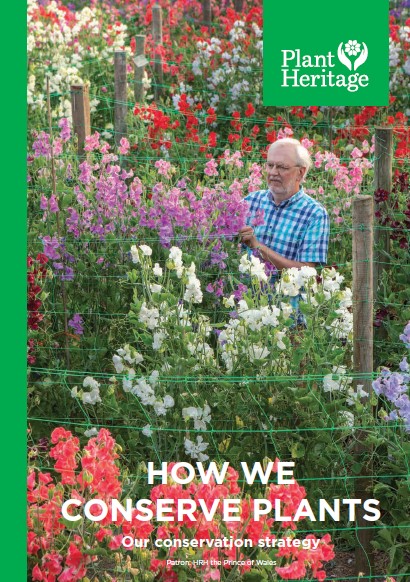Britain is a nation of gardeners. Our long history of collecting, breeding and growing plants gives us a really rich garden flora.
There are lots of charities focused on the conservation of wild plants, but Plant Heritage is unique in focusing on the conservation of cultivated plants (garden plants). We do this by growing them, caring for them and recording them. Through our flagship conservation schemes - the National Plant Collections and the Plant Guardians - we are safeguarding nearly 100,000 special plants for the future. This living library is a great resource for gardeners, garden designers, botanists and researchers alike. It includes rare and unusual plants that aren’t widely available commercially, and continues to expand as new plants are added.
Why conserve garden plants?
Nobody knows exactly how many different garden plants there are. The Royal Horticultural Society (RHS) has estimated that there could be 400,000. Most nurseries and garden centres stock only a limited range, and public gardens can’t look after them all. What is popular changes over time, and plants can disappear forever if they are not kept safely in National Collections.
Today, our work is more important than ever, because of the increasing risks from climate change as well as new pests and diseases. Plants are a valuable historical and future resource, whether for their beauty, or having edible, medicinal or other useful properties. Each plant has a unique genetic code making it impossible to replace if lost. Protecting a diverse range of plants is good for biodiversity and increases our resilience to future shocks, like extreme weather.
Will you help us?
C
Heuchera from the collection of Richard and Vicky Fox
Cercidiphyllum collection, Sir Harold Hillier Gardens
Sir Harold Hillier Gardens
Why does this matter?
Garden plants are valuable for many reasons
Reference
National Plant Collections are living reference libraries where all the plants in a genus or group can be seen together, compared and researched. When funding for botanic gardens and parks is under threat, the need to earmark, support and conserve these collections becomes more urgent. A collection holder can become the authority/expert on a plant group, able to provide advice, conduct research and be a resource for others.
Historical
The plants collected from around the world by plant hunters or bred by the head gardeners on country estates are as much a part of our history as our stately homes and art. They feature in stories, legends, works of art and songs, providing a living link to our ancestors and culture. National Plant Collections recognise the value of this history and help preserve it.
Horticultural
From cottage gardens and allotments to the grand estates, they were all founded on plants such as old pinks, florists' violas, extravagant tulips, Malmaison carnations and dainty auriculas. These often need specialist cultivation and may represent a body of knowledge built up over a lifetime. Sadly, these specialist skills are easily lost along with the plants so by keeping the plants in National Plant Collections, we are also keeping the knowledge about them.
We’re not all about the past though - there are constantly new developments in plant breeding and the best of these will enrich our gardens and National Collections for years to come.
Delphinium Collection at Temple Newsam, Leeds City Council
"GENETIC DIVERSITY WITHIN POPULATIONS OF WILD AND DOMESTICATED SPEICIES, IS MAINTAINED"
Global context
The world of plant conservation is constantly changing and Plant Heritage has a role in supporting this in order to ensure resilience to environmental and societal change.
We were founded under the principle that we should '…conserve the unique gene pool of accumulated variation from centuries of selection and breeding, a resource of great economic potential and heritage value.' (Brickell, 1977).
This need not only remains but has been strengthened through the Convention on Biological Diversity 2022 Kunming-Montreal Global Biodiversity Framework, which sets as one of its long term goals that ‘genetic diversity within populations of wild and domesticated species, is maintained’, with a target by 2030 ‘to maintain and restore the genetic diversity within and between populations of native, wild and domesticated species to maintain their adaptive potential, including through in situ and ex situ conservation’.
As an example of ex situ conservation of domesticated species, National Collections are contributing to global efforts to halt biodiversity loss.
Our conservation strategy
Once it’s gone it’s gone! Plants growing in gardens
might seem safer than those in the wild, but they can
easily be lost forever if nobody is looking after them.
Plant Heritage is the only organisation with the aim of
conserving garden plants across the British Isles and Ireland.

Our partners








